Yeongju travel - South Korea, Asia
Yeongju is a city located in the far north region of North Gyeongsang province in South Korea. approximately 200 kilometers southeast of Seoul. The city is nestled at the base of the Sobaeksan Mountain range, which is part of Sobaeksan National Park. This picturesque setting provides a stunning backdrop for outdoor activities and hiking. The city covers an area of 668.84 km2. Yeongju sits on the Sallok plateau at the base of Sobaeksan Mountain, with an elongated shape that is longer from north to south than it is wide from west to east. The city is roughly 200m above sea level. Sobaeksan Mountain, which borders the Jungnyeong Pass, stretches southwest from Yeongju, with peaks such as Birobong, Gugmangbong, Yeonhwabong, and Dosolbong.
Craving an exceptional South Korea adventure? Explore our handpicked premium tours here for the ultimate experience.
Population: Estimate 100,000 residents (as of 2024)
Land marks: Buseoksa Temple, Sosuseowon Confucian Academy, Sobaeksan National Park, Museom Village, Seonbichon Village, Juklyeong Yetgil
Economy: With its rich historical sites and natural attractions, tourism plays a vital role in Yeongju's economy. The city's cultural landmarks, such as Buseoksa Temple and Sobaeksan National Park, attract visitors interested in history, spirituality, and outdoor activities.
South Korea
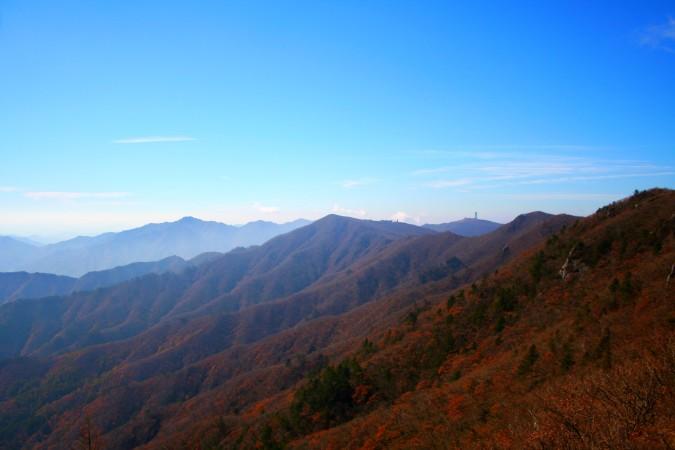
Overview of Yeongju
History & Culture Influence
Yeongju's history as a center of Confucian and Buddhist learning, its association with important historical figures, and its stunning natural setting have all combined to create a city that is deeply rooted in tradition while also embracing modernity. The city's character is a reflection of its past, and its cultural influence continues to shape the lives of its residents and visitors alike.
Yeongju is also the birthplace of several important historical figures, including Yi Hwang, a prominent Confucian scholar who served as a magistrate in the mid-16th century and is featured on the 1,000 won bill. The city is also associated with King Gyeongsun, the last ruler of the Silla Kingdom, who is said to have stopped in Yeongju on his way to surrender to the Goryeo Dynasty.
Interaction with The Locals
Yeongju is predominantly populated by ethnic Koreans, with a mix of Confucian and Buddhist influences. The city has a relatively large older population, as it is known for its Confucian heritage and traditional Korean culture. Visitors may encounter a stark contrast between the city's traditional atmosphere and the changing cultures of younger generations. Visitors to Yeongju can expect a warm and friendly reception from the locals, who take great pride in their city's rich history and culture.
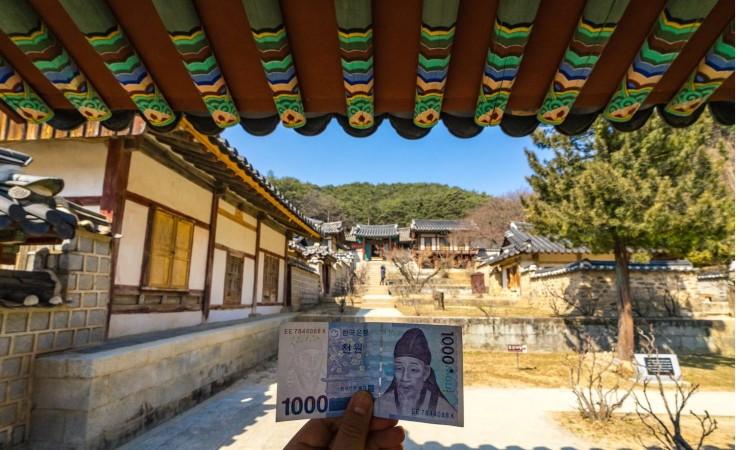
Dosan Seowon - © runawayjuno
Top Attractions in Yeongju
Sobaeksan National Park
Location: in the provinces of Chungcheongbuk-do and Gyeongsangbuk-do, South Korea
A stunning national park known for its beautiful hiking trails, scenic landscapes, and vibrant fall foliage. It's a popular destination for outdoor enthusiasts and nature lovers.
Huibang Falls
Location: in Sobaeksan National Park near the town of Danyang
The picturesque waterfall located within Sobaeksan National Park, offering a serene and refreshing setting for visitors to relax and enjoy nature.
Buseoksa Temple
Location: near Mt. Bonghwang in Buseok-myeon
One of the most famous Buddhist temples in Korea, dating back to the 7th century. It's known for its beautiful architecture and is a UNESCO World Heritage site.
Sosu Seowon
Location: Suksusa Temple, located in Sunheung-myeon, Yeongju City, North Gyeongsang Province
A well-preserved Confucian academy from the Joseon Dynasty, designated as a UNESCO World Heritage site. It offers insights into the history of Confucian education in Korea.
Seonbi Village
Location: 357, Cheonggu-ri, Sunheung-myeon, Yeongju City, North Gyeongsang Province
A traditional village that showcases the lifestyle and culture of Confucian scholars, known as "seonbi." Visitors can experience traditional Korean architecture and learn about the values of Confucianism.
Museom Village
Location: Sudo-ri in Yeongju, Gyeongsangbuk-do
A well-preserved traditional village that provides a glimpse into the daily life of Koreans during the Joseon Dynasty. It features traditional houses, workshops, and cultural experiences.
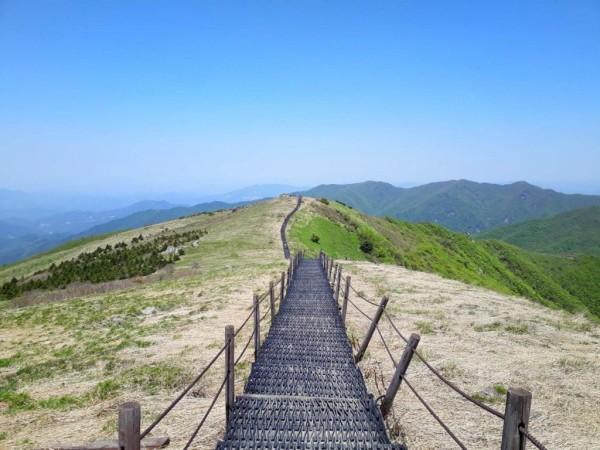
Parc national de Sobaeksan - © collecter
Must-Try Dishes in Yeongju
Yeongju Hanwoo Beef
Yeongju is renowned for offering some of the best Hanwoo beef in South Korea. Hanwoo, a premium breed of cattle native to Korea, is celebrated for its tender and flavorful meat, available in various cuts perfect for grilling or stewing. The exceptional quality of Hanwoo beef is a source of pride in Yeongju and is frequently highlighted in traditional Korean barbecue, reflecting the region's agricultural prowess.
Yeongju Apples
The region of Yeongju is famous for its delicious, crisp apples, grown in the fertile local soil. These apples are versatile, enjoyed fresh, in salads, or as part of desserts, and play a significant role in the local economy. The importance of apple cultivation is celebrated through various festivals, emphasizing its role in the cultural landscape of Yeongju.
Ginseng Chicken Soup (Samgyetang)
Samgyetang, a nourishing traditional Korean soup, consists of a whole young chicken stuffed with glutinous rice, ginseng, garlic, and jujubes, slowly simmered to perfection. Ginseng, a key local product known for its health benefits, makes this dish especially popular during the summer months as a revitalizing meal.
Makgeolli
Yeongju's local makgeolli, a traditional Korean rice wine, is cherished for its slightly sweet, milky flavor, distinctively influenced by the region's rice and brewing techniques. Makgeolli is not just a beverage but a cultural staple, often enjoyed with savory pancakes (jeon) and during traditional Korean celebrations.
Yeongju Tteok
In Yeongju, traditional Korean rice cakes, or tteok, made from glutinous rice are a culinary highlight. These rice cakes, often filled with sweetened red bean paste, are known for their soft texture and delightful flavors. Tteok holds a special place in Korean culture, symbolizing good fortune and prosperity, and is a favored treat during celebrations and rituals.
Korean Fried Chicken
Korean fried chicken, known for its crispy skin and juicy meat, is a popular dish in Yeongju, typically seasoned with a variety of sauces like sweet and spicy or garlic soy. This dish has become a staple across South Korea and is a favorite at social gatherings, reflecting Yeongju's blend of modern culinary trends with traditional flavors.
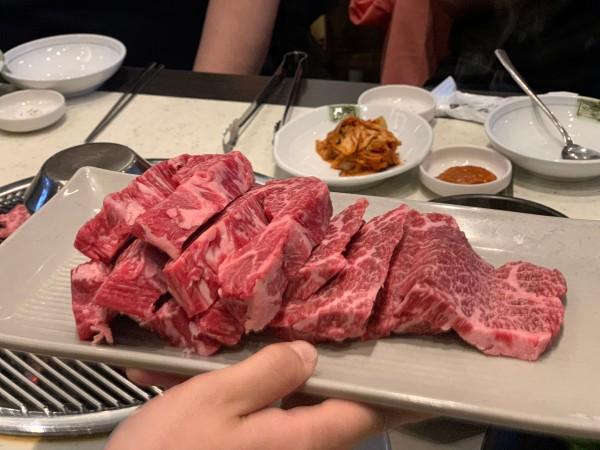
Bœuf Hanwoo de Yeongju - © collecter
Festivals & Local Celebrations
Yeongju Punggi Ginseng Festival
Time of Year: Typically held in late September to early October.
This festival celebrates the region's renowned Punggi ginseng, known for its superior quality and health benefits. Visitors can engage in ginseng harvesting, taste various ginseng-infused dishes, and enjoy cultural performances. The event also includes exhibitions and sales of ginseng products, highlighting the significance of this local specialty.
Yeongju Sobaeksan Mountain Royal Azalea Festival
Time of Year: Usually takes place in mid-April.
Set in Sobaeksan National Park, this festival celebrates the spectacular bloom of royal azaleas. Attendees can hike through vibrant landscapes, join guided tours, and partake in cultural activities like traditional music and dance performances, all set against the backdrop of the park’s natural beauty.
Yeongju Seonbi Cultural Festival
Time of Year: Typically celebrated in early October.
Dedicated to the legacy of the region’s Confucian scholars, or seonbi, this festival offers a deep dive into traditional Confucian ceremonies, educational workshops, and performances that reflect the values and teachings of Confucianism, emphasizing the area’s rich cultural heritage.
Museom Single-Log Bridge Festival
Time of Year: Usually held in late May.
Celebrating the traditional single-log bridge, a cultural hallmark of the region, this festival allows visitors to cross the historic bridge, participate in local craft demonstrations, and savor traditional foods, fostering a sense of community and showcasing local craftsmanship.
Yeongju Apple Festival
Time of Year: Typically takes place in late October.
The Yeongju Apple Festival honors the area’s famous apples with activities such as apple picking, tastings, and an array of apple-based culinary treats. The festival also offers live entertainment and family-friendly games, all while highlighting the local apple industry’s vital role in the community.
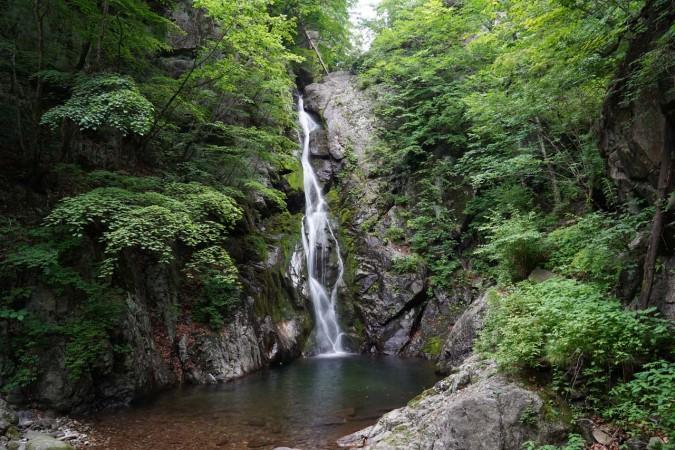
Chutes de Huibang - © Johnny T. Cheng
Weather in Yeongju
Average Temperatures and Rainfall
- Spring (March to May): The temperatures gradually warm up from chilly lows in March to comfortable warmth by May. Average temperatures range from 5°C to 20°C (41°F to 68°F). This season is relatively dry with occasional rain.
- Summer (June to August): Summers are hot and humid with temperatures averaging between 20°C and 30°C (68°F to 86°F). This is also the rainy season, with July typically being the wettest month, so rain gear is essential.
- Autumn (September to November): Autumn is mild and generally considered the best time to visit Yeongju. Temperatures cool down from 20°C in September to around 10°C (50°F) in November. The weather is mostly dry, making it ideal for outdoor activities and enjoying the colorful fall foliage.
- Winter (December to February): Winters are cold with temperatures often dipping below freezing, especially in January, the coldest month. Snowfall is common, so warm clothing and snow gear are recommended.
Best Time to Travel
- The best times to visit Yeongju are during the spring and autumn months. Spring offers the beautiful cherry blossoms and comfortable temperatures, while autumn provides stunning foliage and perfect weather for exploring the natural and cultural sights of Yeongju.
Other Weather Patterns:
- Yeongju can experience occasional strong winds, particularly during the transition between seasons. It's also worth noting that the region might face foggy conditions in the mornings and evenings, especially in mountainous areas during spring and autumn.
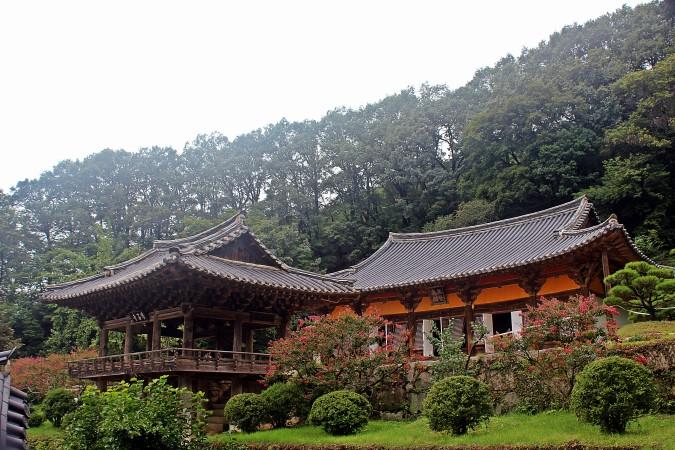
Temple de Buseoksa - © 최옥석
Culture Etiquette in Yeongju
Greetings
In Korea, greetings are a sign of respect, and a slight bow is often the first step. In more formal settings, you might combine a bow with a handshake, particularly when meeting elders or superiors. When shaking hands, use both hands to show respect. It’s also polite to address people by titles like "Mr." or "Ms." followed by their last name, such as "Kim-ssi" for Mr. Kim. First names are generally reserved for closer relationships, so wait until invited to use them.
Dining Etiquette
Meals in Korea are a communal affair, with dishes placed in the center for everyone to share. Always wait for the eldest person to begin eating before you start. When it comes to utensils, use chopsticks for solid foods and a spoon for rice or soup. One important note: never stick your chopsticks upright in a bowl of rice, as this resembles a funeral ritual. Lastly, it’s considered polite to finish everything on your plate, as leaving food behind can be seen as wasteful.
Respect for Elders
Respecting elders is deeply ingrained in Korean culture. When an elder enters the room, it’s polite to stand and use formal language when speaking to them. In social settings, elders are usually seated first, with others following based on age. Pay close attention to seating arrangements and always let elders take precedence.
Gift Giving
If you’re invited to someone's home, bringing a small gift like fruit, sweets, or a souvenir from your home country is a thoughtful gesture. Present the gift with both hands to show respect. Avoid using white or black wrapping paper, as these colors are associated with funerals. Instead, choose bright colors like red or gold, which are seen as more festive.
Communication Style
Koreans often communicate indirectly, especially when discussing sensitive topics. It’s helpful to pay attention to non-verbal cues and be patient during conversations. Silence is perfectly acceptable in Korean culture, often showing thoughtfulness or respect, so don’t feel pressured to fill every pause with words..
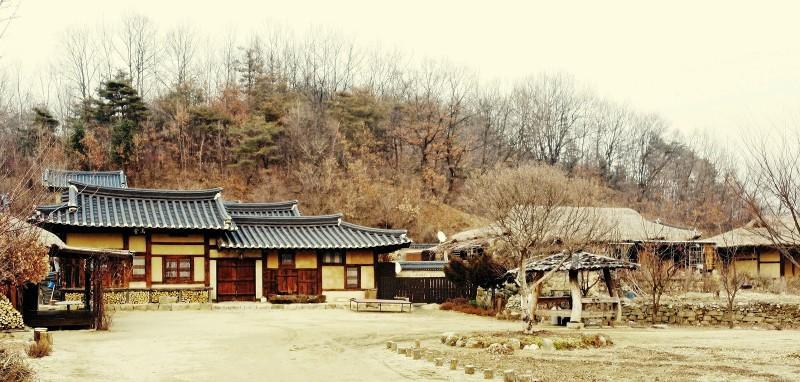
Maisons traditionnelles du village de Museom - © collecter
Essential Travel Information
Getting to Yeongju
Airport Transfers
Incheon International Airport (ICN): The nearest major airport is Incheon International Airport, located about 200 kilometers from Yeongju. Visitors can take a shuttle service, such as Kiwitaxi, which offers comfortable transfers directly to Yeongju. This service is convenient for those traveling with luggage and looking for a hassle-free journey.
Train and Bus Services
From Seoul: Visitors can travel from Seoul to Yeongju via train or bus. The train ride typically takes about 2¼ hours, while buses are also available, offering a budget-friendly option. The journey by bus costs around $14.
Getting Around Yeongju
Public Transit
Yeongju has a local bus system that connects various parts of the city and nearby attractions. Buses are a convenient way to explore the area, although schedules may vary.
Taxis
Taxis are readily available in Yeongju and provide a comfortable way to navigate the city. They can be hailed on the street or booked via phone. Kiwitaxi also offers tourist taxi services that can be booked for day tours, allowing visitors to explore multiple attractions conveniently.
Ride-Sharing Services
While ride-sharing services like KakaoTaxi are available in South Korea, their presence in Yeongju may be limited compared to larger cities. However, they can still be a viable option for those familiar with the app.
ATM and Banking Services
ATM Availability
Yeongju has several ATMs available for visitors and locals, including those from major banks such as KEB Hana Bank, Woori Bank, Shinhan Bank, and NH Nonghyup. Many of these ATMs are located at convenient spots, including Yeongju Station and various branches throughout the city. Notably, some ATMs operate 24 hours a day, providing easy access for cash withdrawals.
Bank Branches
Key banks in Yeongju include Hana Bank, Woori Bank, and Saemaul Geumgo, which have physical branches where visitors can conduct banking transactions. The branches offer services such as currency exchange, account management, and financial advice.
Yeongju Station: This area features multiple ATMs and banking services, making it a convenient stop for travelers arriving by train.
Central Yeongju: Various banks and ATMs are scattered throughout the city center, ensuring easy access for both residents and visitors.
Accommodation Choices in Yeongju
Yeongju Hotel
A popular choice among travelers, this hotel offers comfortable accommodations with modern amenities. It is conveniently located near key attractions and provides easy access to public transportation.
Booking: Reservations can be made through platforms like Agoda and Expedia, which often feature competitive rates and customer reviews.
Buseoksa Temple Stay
For a unique experience, visitors can stay at Buseoksa Temple, which offers temple stay programs. Guests can participate in meditation, Buddhist rituals, and enjoy the serene environment of the temple grounds.
This option provides an immersive cultural experience, allowing visitors to learn about Buddhism and traditional Korean practices.
Guesthouses and Homestays
Yeongju also has various guesthouses and homestays that offer a more local experience. These accommodations often provide a cozy atmosphere and the opportunity to interact with local families.
Booking: Many of these options can be found on popular travel websites, catering to budget-conscious travelers looking for a more personal touch.
Motels
Yeongju features several motels that are budget-friendly and provide basic amenities. These are ideal for travelers seeking economical lodging without sacrificing comfort.
Articles for you

Experience Aboard The RV Indochine II - A Mekong Cruise With Tweet World Travel
The RV Indochine II is a luxury river cruise ship, offering an unforgettable journey through many attractions along the Mekong River. Built in 2017, this upscale vessel combines colonial elegance with modern conveniences to create a comfortable yet stylish environment for its crew and passengers. The ship’s intimate size makes it ideal for those seeking a more personal cruising experience while exploring Vietnam and Cambodia rich culture, scenery, and heritage. Whether you're gazing at the landscape from your private balcony or enjoying authentic local cuisine, RV Indochine II promises an exotic adventure like no other.

Witness Stilt Fishing In Sri Lanka: An Eco-Tourism Experience
Sri Lanka, renowned for its stunning beaches and rich cultural heritage, harbors a unique tradition that has captivated travelers for centuries: stilt fishing. This ancient practice, passed down through generations of coastal communities, blends artistry with necessity, offering a glimpse into a way of life intimately connected to the island's coastal rhythms. Stilt fishing in Sri Lanka isn't merely a means to catch fish; it's a cultural emblem, embodying the resilience and ingenuity of Sri Lanka's fishing communities.

Make Your Trip Stress-Free With The Tweet Trip App
Embark on your next adventure with confidence by downloading the Tweet Trip App, available for both iOS and Android. This essential travel companion allows you to view your detailed itinerary, stay connected with your tour guide and fellow travelers, receive real-time updates, and provide feedback effortlessly. With features like in-app messaging, emergency assistance, and location sharing, the Tweet Trip App ensures you travel smarter, stay connected, and enjoy a seamless, worry-free journey. Get started today and make the most of your travel experience with Tweet World Travel.

Pedal Through Paradise: Unveiling Cambodia's Hidden Gems on Two Wheels
The gentle whir of bicycle wheels mingles with the distant chants of monks as you glide past emerald rice paddies stretching to the horizon. This is Cambodia - a sensory explosion waiting to be experienced on two wheels. At Tweet Tours, we believe there's no better way to immerse yourself in the Kingdom of Wonder than by bicycle.
Cambodia isn't just a destination; it's a living, breathing tapestry of ancient wonders, natural beauty, and vibrant culture. Our carefully crafted cycling tours take you beyond the typical tourist haunts, offering a unique perspective on this captivating country. Ready to clip in and discover the magic of Cambodia? Let's ride!

Trekking in the Himalayas: A Journey Through Nepal's Majestic Peaks
The Himalayas rise from the earth like colossal guardians, their snow-capped peaks piercing the sky in a display of nature's raw power and beauty. Nepal, nestled at the heart of this mountain range, serves as the gateway to some of the most breathtaking trekking experiences on the planet. Here, the air is crisp and thin, filled with the promise of adventure and the whispers of ancient tales.
With Tweet Tours, as you set foot on these hallowed trails, you're not just a traveler - you're a modern-day explorer, following in the footsteps of legendary mountaineers and age-old traders. Each step takes you further into a world where nature reigns supreme and human resilience is tested against the backdrop of some of the world's highest peaks.
From the moment your boots touch the ground in Kathmandu, you'll feel the pull of the mountains. The bustling streets of the capital, with their sensory overload of sights, sounds, and smells, soon give way to serene mountain paths where the only soundtrack is the crunch of gravel underfoot and the distant tinkling of yak bells.

Exploring Mui Ne's Wonders: Unique Attractions & Local Dishes
Nestled along the southeastern coast of Vietnam, Mui Ne emerges as a captivating gem, blending natural wonders with cultural richness. Renowned for its stunning landscapes and unique attractions, Mui Ne beckons travelers seeking both relaxation and adventure in equal measure. Mui Ne's renowned beach dunes, bustling fishing towns, and excellent local food await exploration at every turn.
The allure of Mui Ne lies not only in its pristine beaches and crystal-clear waters but also in its diverse range of activities catering to every traveler's whims. Whether you're drawn to thrilling water sports like kitesurfing and windsurfing on its dynamic shores or seeking tranquility amidst the picturesque Fairy Stream, Mui Ne promises an unforgettable journey filled with discovery.
